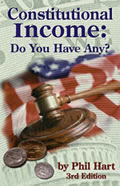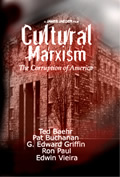A
CROSS OF DEBT
PART 3 of 4
By
Dr. Edwin Vieira, Jr., Ph.D., J.D.
February 10, 2012
NewsWithViews.com
In principle, too, the apology of “virtual representation” is nonsensical.
• First, even if “representatives” elected in the present can properly “represent” the generation that ensconced them in office—which is an highly debatable point—they cannot “represent” future generations the circumstances of which must be entirely unknown to and unknowable by them. How can “representatives” today possibly judge whether “our Posterity” in some future time will be able to afford such a gargantuan debt in the face of the vicissitudes that may then plague them?
• Second, “representatives” elected in the present cannot presume, let alone know, that “our Posterity” would even concur in the actual process—always convoluted, often corrupt—by which the public debt is incurred today, let alone accept the results of that process. To the contrary: As rational beings, “our Posterity” would never agree to afford carte blanche to intertemporal “virtual representation”, because both the “representatives” and their constituents in the present are not neutral arbiters, but instead are patently self-interested parties intent upon enjoying the immediate benefits of deficit finance in the present while sloughing off its inevitable burdens onto the future. Such “representatives” are absolutely disqualified as “trustees” of the public interest as far as “our Posterity” is concerned, because their own interests are inexorably adverse to those of the purported “beneficiaries” of their actions.
The complete corrective to this intergenerational conflict of interests would be to eliminate altogether, or at least drastically curtail, the power of Congress “[t]o borrow Money on the credit of the United States”.[11] That course of action, however, would be cumbersome, because it would require a very specific amendment of the Constitution, which would have to be “propose[d]” by Congress itself—unless Americans want to play political Russian Roulette by calling for a constitutional convention.[12]
In the interim, the best that can be done is to recognize that, if some public debt is arguably justified on the ground that it may become unavoidably necessary—perhaps, for example, during a properly declared and legally justifiable “War”[13]—nonetheless in incurring any such debt the fiduciary responsibility of the present generation to “our Posterity” must be of the very highest order. No debt should be incurred that is not constitutionally “necessary and proper” beyond a reasonable doubt.[14] So, the prudent as well as circumspect approach for the present should be to enforce strict “checks and balances” on the exercise of the power “[t]o borrow Money”.
Now, the ultimate practical “check and balance” on speculation is uncertainty. Lenders do not lend freely to borrowers who are not likely to repay. Public officials have been able to amass the present gargantuan debt, because they have purported to “borrow Money on the credit of the United States”.[15] And lenders have relied on what is called “the full faith and credit of the United States”—or, more descriptively, what has always been the robotic willingness of common Americans to continue to pay the bills passed on to them by public officials in the name of the United States.
At base, though, “the credit of the United States” is a legal fiction. It can extend only to those actions of public officials that are constitutional. So not all purported “public debt” is lawful simply because it comes forth stamped with some official’s approval. The legitimacy of any ostensible “public debt” is contingent upon its rectitude, not simply its naked existence.
The Constitution itself declares that “[t]he validity of the public debt of the United States, authorized by law, * * * shall not be questioned”.[16] This statement embodies the recognition that some supposed “public debts” may not, after all, be “authorized by law”—as, for instance, when they are unconstitutional or otherwise illegal—and that all alleged “public debts” may be “questioned” on that very ground.[17]
Only if these principles are actually applied to the present “public debt” will America burn the bridges between the financial speculators on Wall Street and the Treasury on Pennsylvania Avenue. And the time for such incendiary action has arrived. Under contemporary circumstances, the purported “public debt” of the United States not only should be but shall have to be more than just “questioned”, because its cancerous growth has set into motion an autocatalytic reaction which, unless soon quenched, will ignite the worst of all possible economic conflagrations: an hyperinflationary depression.
Indeed, the supremacy of the Constitution[18] requires that all ostensible “public debts”—no less than any and all other actions of public officials—should be capable of being “questioned” at all times. For “[i]t cannot be presumed that any clause of the constitution is intended to be without effect”.[19] And inasmuch as the power of Congress “[t]o borrow Money on the credit of the United States” is a delegated power, limited by its terms, therefore the burden of establishing that it has been properly exercised in any and every case “is upon those making the claim”—namely, the public officials and the lenders who purport to incur the debt.[20] If that burden cannot be carried with respect to any portion of the purported “public debt”, then such part is null and void. For the alleged assumption of “public debt” always involves some supposed “law”. And if that “law” is unconstitutional, then it is no “law” at all. “[I]t confers no rights * * * imposes no duties * * * [and] is, in legal contemplation, as inoperative as though it had never been passed”.[21]
The formula for calculating what portion of the purported “public debt” is legitimate and what portion is not is straightforward.
Bills for raising revenue are inevitably tied to governmental spending, the former being the effect and the latter the cause. As the Constitution declares, “Congress shall have Power To lay and collect Taxes, Duties, Imposts and Excises, to pay the Debts and provide for the common Defence and general Welfare of the United States”.[22] In any particular year, the government’s budget typically provides that so much is to be spent on certain activities—and to pay for it, so much is to be raised through taxes;[23] so much through borrowing;[24] so much (perhaps) through “dispos[al] of * * * the Territory or other Property belonging to the United States”;[25] and so much through other sources of governmental income.
So, because governmental income and expenditures are thus inextricably linked, in order to determine the unconstitutional portion of any amount of ostensible “public debt” incurred in any fiscal year, one need only determine what proportion of the expenditures for that year, related to that debt, are unconstitutional.
If a specific program is tied to a particular loan, then the unconstitutionality of that program will determine the unconstitutionality of that loan. If the program is unconstitutional, the debt incurred to float it is null and void.[26]
But if the money the Treasury borrows goes into its general fund, not tied to any particular program, then some formula for allocating the reduction of debt in relation to unconstitutional activities must be employed. For example, let T (TAXES COLLECTED) + D (DEBT INCURRED) + S (SALES OF PROPERTY) = E (EXPENDITURES), and X = THE AMOUNT OF E THAT INVOLVES UNCONSTITUTIONAL ACTIVITIES.
Now, X cannot easily be applied to reduce S, because, in contradistinction to “Taxes, Duties, Imposts and Excises” which may be expended “to pay the Debts and provide for the common Defence and general Welfare of the United States”,[27] and to borrowing which must be “authorized by law”,[28] the Constitution imposes no specific limitation on the discretion of Congress to “dispose of * * * the Territory or other Property of the United States”.[29] Of course, any such disposal would have to further the goals set out in the Constitution’s Preamble. So, if some same of property were made specifically in order to finance an unconstitutional program, that sale could be rescinded. As of now, though, few of these transactions occur. So, for the sake of simplicity at this point, this source of income may be disregarded. (In the future, though, things may be different, as will be discussed below.)
X should be applied to D before T, precisely in order to discourage lending to the General Government, because, more than any other source of governmental income, lending facilitates and encourages unconstitutional expenditures. After all, unlike taxpayers, lenders act voluntarily and presumably with access to adequate information from the General Government’s budget and other official sources. Thus, they lend their money knowing full well (or at least on adequate notice of) how it will be spent and implicitly approving of those expenditures. In addition, just as are the public officials with whom they deal, lenders are chargeable with full knowledge of the powers—and the disabilities—of the General Government, and therefore of which portions of the budget are legitimate or not. So, to the extent that some portion of the public debt subsidizes unconstitutional or otherwise illegal expenditures in the relevant budget, the lenders are in pari delicto with the rogue public officials who borrow the money, aiding those officials in perpetrating a fraud on the American people by purporting to impose a liability on the people to repay a debt for expenditures which cannot be charged to them in the first place. Therefore, when the time comes for repayment of the alleged debt, the lenders are surely not entitled to that portion which was illegally incurred in the first place. Indeed, because of their wrongdoing, arguably they are entitled to nothing at all.
This result is well supported by judicial precedent of long standing. For example, in Hanauer v. Doane,[30] the Supreme Court considered whether a loan, a portion of which was known by the lender to be applied to the purchase of supplies for the Confederate States Army, was repayable, in whole or in part. The Court held that “[i]f either of the[ ] portions of the consideration on which the notes were given was illegal, the notes are void in toto. Such is the elementary rule, for which it is unnecessary to cite authorities.”[31] As the Court explained,
[w]ith whatever impunity a man may lend money or sell goods to another who he knows intends to devote them to a use that is only malum prohibitum, or of inferior criminality, he cannot do it without turpitude, when he knows or has every reason to believe that such money or goods are to be used for the perpetration of a heinous crime, and that they were procured for that purpose,
No crime is greater than treason. He who, being bound by his allegiance to a government, sells goods to the agent of an armed combination to overthrow that government, knowing that the purchaser buys them for that treasonable purpose, is himself guilty of treason or a misprision voluntarily aids the treason. He cannot be permitt d to stand on the nice metaphysical distinction that, although he knows that the purchaser buys the goods for the purpose of aiding the rebellion, he does not sell them for that purpose. The consequences of his acts are too serious and enormous to admit of such a plea. He must be taken to intend the consequences of his own voluntary act.[32] For part four click below.
Click here for part -----> 1, 2, 3, 4,
� 2012 Edwin Vieira, Jr. - All Rights Reserved
Footnotes:
1,
Commentaries on the Laws of England (Philadelphia, Pennsylvania:
Robert Bell, American Edition, 4 Volumes & Appendix, 1771-1773),
Volume 1, at 325-328.
2,
Claude G. Bowers, Jefferson and Hamilton: The Struggle for
Democracy in America (Cambridge, Massachusetts: The Riverside Press,
1925), at 45 (footnotes omitted).
3,
Letter to John Taylor, Monticello, 28 May 1816, in The Works of
Thomas Jefferson, Paul Leicester Ford, Editor (New York, New York:
G.P. Putnam’s Sons, Federal Edition, 12 Volumes, 1904-1905), Volume
11, at 533.
4,
A frugal government is the financial speculators’ worst nightmare,
because then they would have to invest in private enterprises that,
lacking the ability to coerce customers into buying their products,
might fail.
5,
See 31 U.S.C. § 3102(b). And many investment funds open to the
public maintain public debt as significant parts of their portfolios.
6,
See The Federalist No. 10 (James Madison) (emphasis supplied): “By
a faction I understand a number of citizens, whether amounting to a
majority or a minority of the whole, who are united and actuated by
some common impulse of passion, or of interest, adverse to the rights
of other citizens, or to the permanent and aggregate interests of the
community.”
7,
This is a plan on which the Forces of Darkness have long cogitated.
See, e.g., the detailed charts between pages 150 and 151 in Hans Heymann,
Plan for Permanent Peace (New York, New York: Harper & Brothers
Publishers, 1941).
8,
See, e.g., the “conditionality”—or, perhaps more descriptive,
the dictate—the EU and the IMF have imposed on Ireland, commanding
the Irish government to extract a new property tax from homeowners within
the next year. [Link]
9,
U.S. Const. preamble (emphasis supplied).
10,
U.S. Const. preamble.
11,
U.S. Const. art. I, § 8, cl. 2.
12,
See U.S. Const. art. V.
13,
See U.S. Const. art. I, § 8, cl. 11.
14,
See U.S. Const. art. I, § 8, cl. 18.
15,
U.S. Const. art. I, § 8, cl. 2 (emphasis supplied).
16,
Amend. XIV, § 4 (emphasis supplied).
17,
See also 31 U.S.C. 3102(a) (emphasis supplied): “With the approval
of the President, the Secretary of the Treasury may borrow on the credit
of the United States Government amounts necessary for expenditures authorized
by law and may issue bonds of the Government for the amounts borrowed
* * * .”
18,
See U.S. Const. art. VI, cl. 2.
19,
Marbury v. Madison, 5 U.S. (1 Cranch) 137, 174 (1803). Accord, Knowlton
v. Moore, 178 U.S. 41, 87 (1900); Blake v. McClung, 172 U.S. 239, 261
(1898).
20,
See Bute v. Illinois, 333 U.S. 640, 653 (1948).
21,
Norton v. Shelby County, 118 U.S. 425, 442 (1886).
22,
U.S. Const. art. I, § 8, cl. 1.
23,
U.S. Const. art. I, § 8, cl. 1.
24,
U.S. Const. art. I, § 8, cl. 2.
25,
U.S. Const. art. IV, § 3, cl. 2.
26,
See the discussion of Hanauer v. Doane, 79 U.S. (12 Wallace) 342 (1871),
post.
27,
U.S. Const. art. I, § 8, cl. 1.
28,
Compare U.S. Const. amend. XIV, § 4 with art. I, § 8, cl.
2.
29,
See U.S. Const. art. IV, § 3, cl. 2.
30,
79 U.S. (12 Wallace) 342 (1871).
31,
Id. (12 Wallace) at 345 (emphasis supplied).
32,
Id. (12 Wallace) at 346, 347.
33,
See U.S. Const. art. III, § 3, cl. 1 and Ex parte Bollman, 8 U.S.
(4 Cranch) 75, 126 (1807).
34,
See 18 U.S.C. §§ 241 and 242.
35,
See Flemming v. Nestor, 363 U.S. 603 (1960).
36,
12 U.S.C. § 411.
37,
An Act To provide for the establishment of Federal reserve banks, to
furnish an elastic currency, to afford means of rediscounting commercial
paper, to establish a more effective supervision of banking in the United
States, and for other purposes, Act of 23 December 1913, CHAP. 6, §
30, 38 Stat. 251, 275.
38,
See, e.g., Thompson v. Butler, 95 U.S. 694 (1878).
39,
What effectively amounts to a “dirt dollar” would hardly
be such an innovation as it sounds. After all, silver and gold are simply
specific components of “dirt” (that is, earth or ground),
that happen to exhibit greater purchasing powers, ounce for ounce, in
the marketplace than most other components, such as zinc, copper, lead,
or iron. Yet some components of dirt—such as platinum, palladium,
rhodium, and rubidium—are more valuable, ounce for ounce, than
either silver or gold. So (all constitutional objections aside) if a
refined “dirt dollar” of silver or gold is legitimate, no
principled objection to an unrefined “dirt dollar” should
be tenable.
40,
U.S. Const. art. VI, § 3, cl. 2. and art. I, § 8, cl. 5, respectively.
41,
E,g., 31 U.S.C. § 5118(b) declares that “[t]he United States
Government may not pay out any gold coin”. It does not say that
the government may not pay out aliquots of public land.
42,
See Perry v. United States, 294 U.S. 330 (1935).
43,
See U.S. Const. art. I, § 8, cl. 17. See generally Bill Howard
and Bill Redd, Statehood: The Territorial Imperative (Helper, Utah:
Bookcliff Publishing, 2005).
44,
See U.S. Const. art. I, § 8, cl. 17.
45,
See U.S. Const. art. I, § 8, cl. 1.
46,
McCulloch v. Maryland, 17 U.S. (4 Wheaton) 316, 431 (1819).
47,
See Hylton v. United States, 3 U.S. (3 Dallas) 171 (1796). See also
Billings v. United States, 232 U.S. 261 (1914).
48,
See U.S. Const. art. I, § 8, cl. 1.


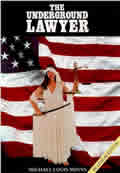

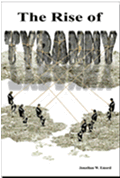

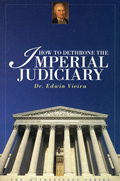
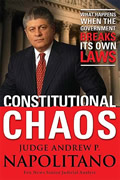



 Share
This Article
Share
This Article
